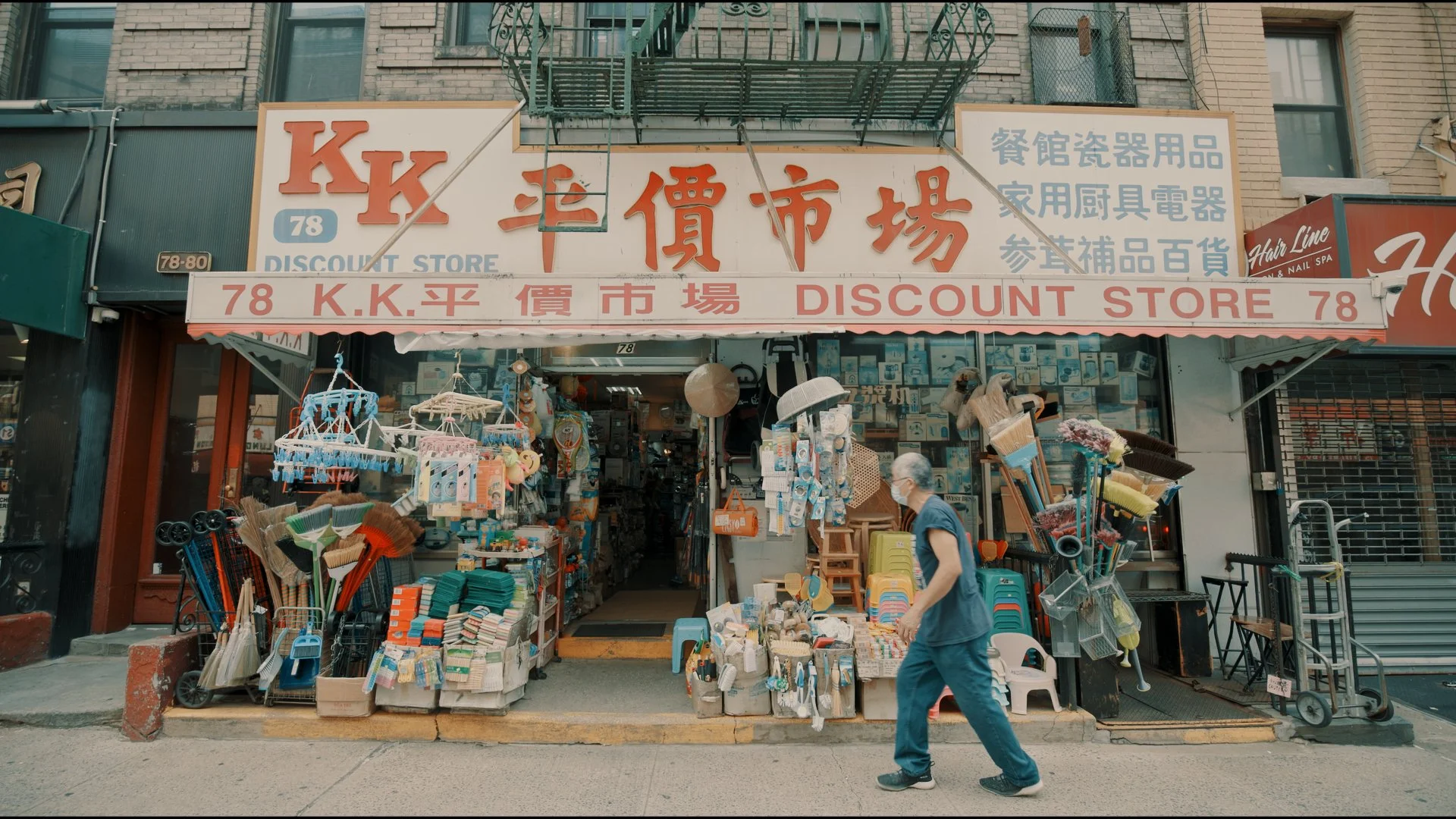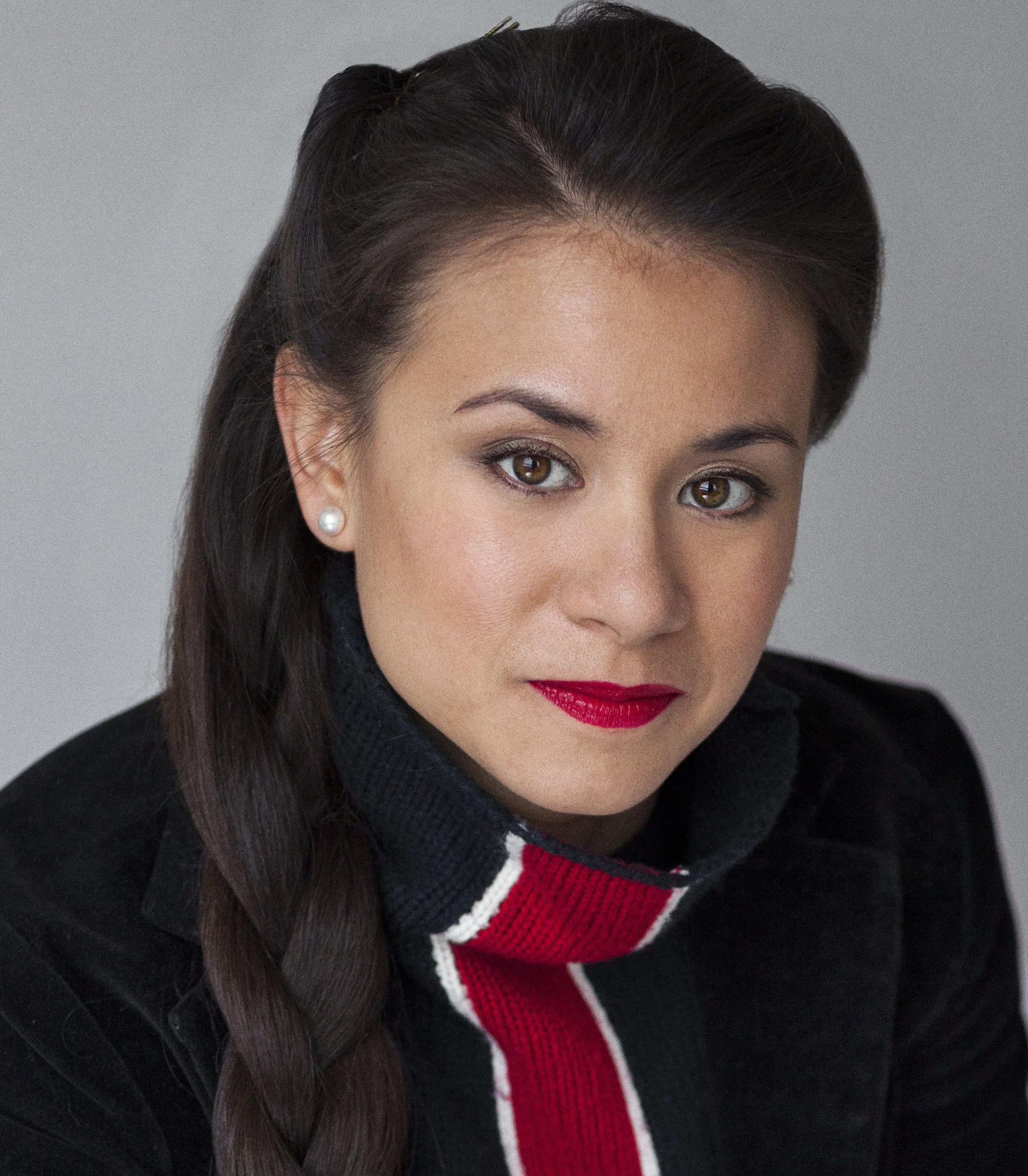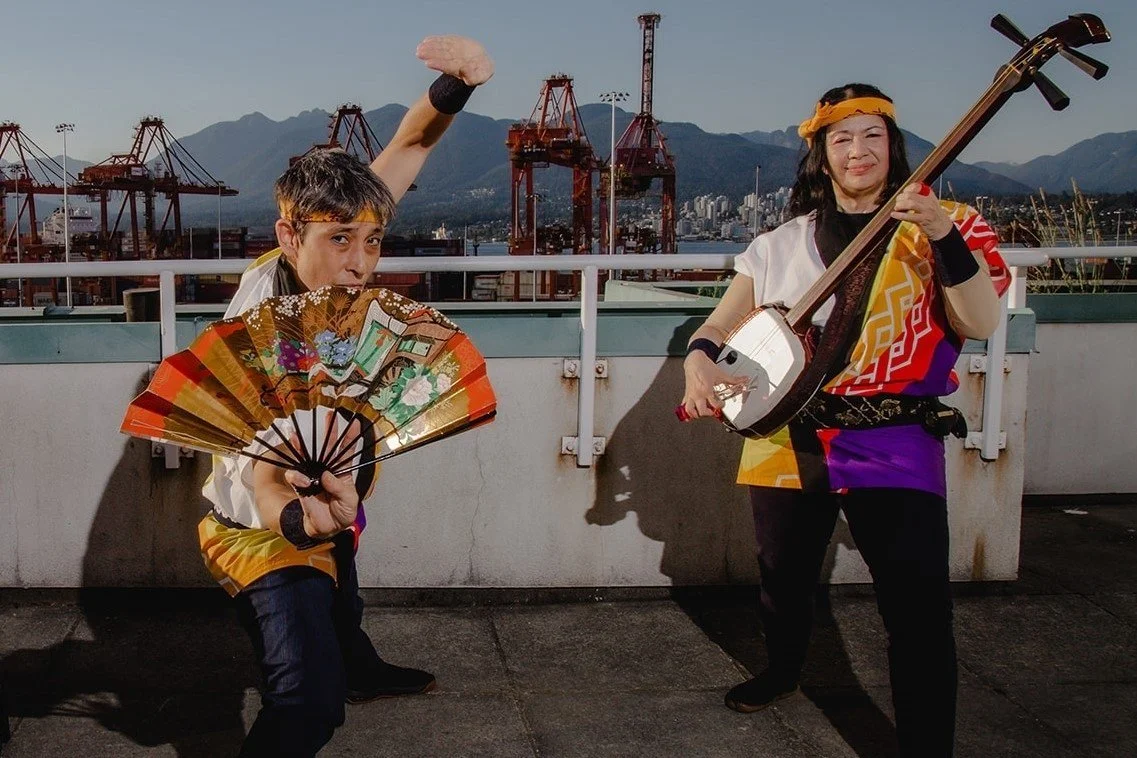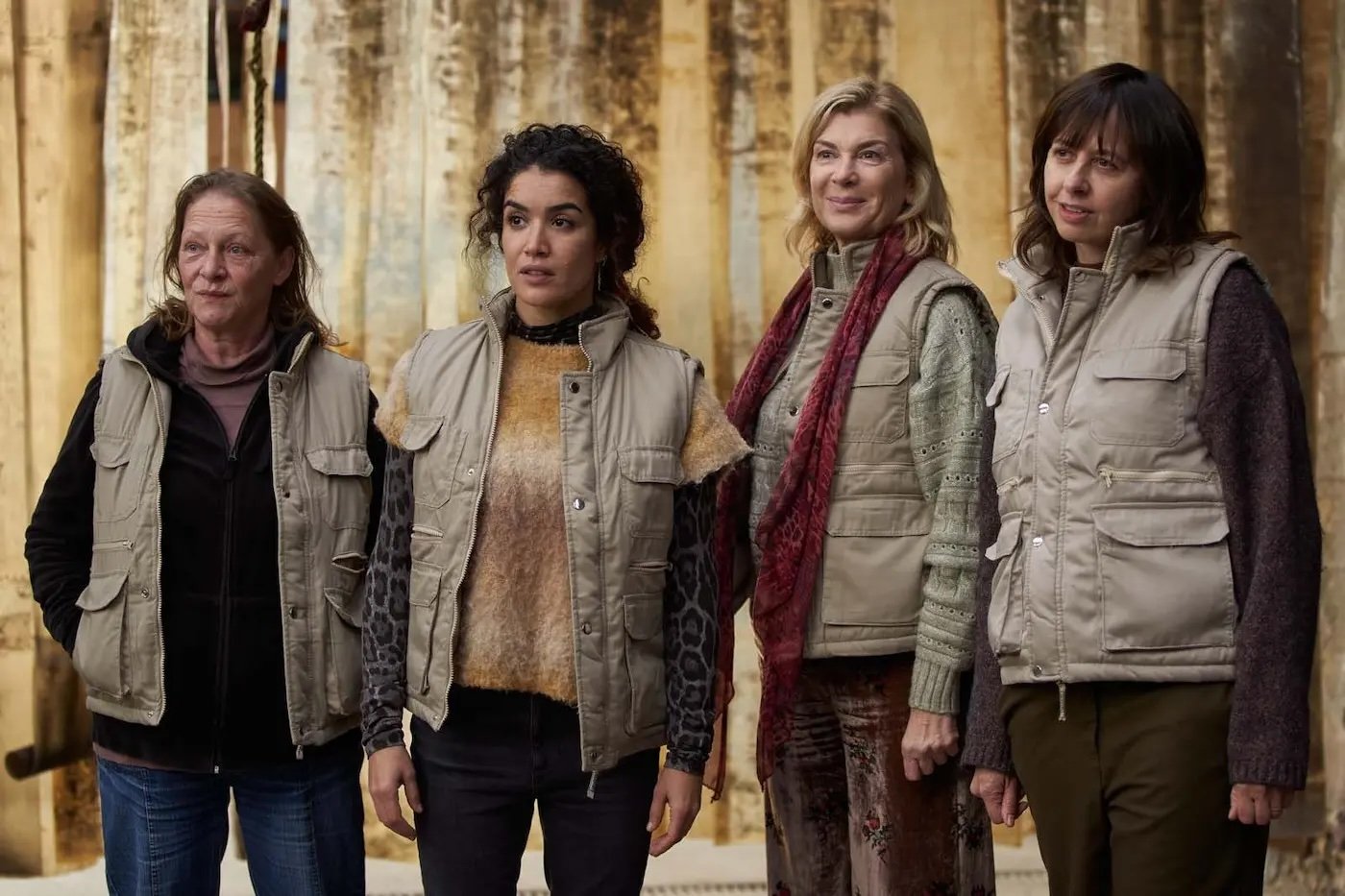DOXA 2023: Big Fight in Little Chinatown captures historic neighbourhoods' resilience
Director Karen Cho’s new documentary looks at Chinatowns in Vancouver, New York City, Montreal, and beyond confronting development and displacement
Big Fight in Little Chinatown.
DOXA Documentary Film Festival (running May 4 to 14) presents Big Fight in Little Chinatown on May 4 at 7 pm at SFU’s Goldcorp Centre for the Arts’ Djavad Mowafaghian Cinema and on May 9 at 5:15 pm at VIFF Centre’s Vancity Theatre
FIFTH-GENERATION CHINESE-CANADIAN documentary filmmaker Karen Cho has deep personal connections to Chinatowns on both sides of the country. Her father’s paternal grandfather worked as a market gardener in the Vancouver neighbourhood in the 1880s; her dad’s maternal grandfather was one of the original associates of the company that later became Wings Noodles, which is still in business in the Montreal district today. While these historical communities are integral parts of her family heritage, Cho got to know more about them while making “In the Shadow of Gold Mountain” for the NFB. The 2004 short documentary looked at the Chinese head tax and the Exclusion Act and launched in Chinatowns all across the country. More recently, Cho found herself increasingly gravely concerned about the neighbourhoods’ futures and very survival.
“It was disturbing to me to see these places that I loved so much in periods of decline or active erasure,” the Montreal native tells Stir in a phone interview. “Chinatown is the last geographic remnant of ethnocultural communities, often the last one standing. The immigration laws against the Chinese meant that they had to stay in Chinatown; they couldn't buy land elsewhere and weren't allowed to reunite with their family, so it became a place of family for them.”
Big Fight in Little Chinatown is Cho’s new feature-length doc exploring Chinatowns across North America. Opening the 2023 DOXA Documentary Film Festival, it features interviews with community activists and organizers, shop and restaurant owners, historians, and others connected to Chinatowns in Montreal, Vancouver, Toronto, New York City, and San Francisco—all facing similar challenges. Jumping back in time to shed light on the neighbourhoods’ foundations, the film also explores passionate efforts to prevent them from disappearing due to gentrification and urban “renewal”.
Karen Cho.
Research for the film began in 2020 when Cho travelled to New York for a gathering called Coast to Coast Chinatowns Against Displacement, an effort of six Chinatowns. Three days later, the pandemic shut the world down, but the wheels were in motion. Cho enlisted the help of cinematographers Nathaniel Brown and Joshua Frank; the former had a connection to Mei Lum, a fifth-generation Chinese-American and owner of a porcelain store called Wing on Wo & Co., the oldest shop in New York’s Chinatown. Brown was already in the family’s COVID bubble; the camera follows them and other residents as they fight against the proposed development of a future “mega” jail that would be the world’s tallest, at around 300 feet, or 40 storeys, right in the middle of the neighbourhood near a public park, seniors’ housing, a daycare, and small businesses. Demolition and construction would mean nearly a decade of disruption and toxic dust, something the neighbourhood likely wouldn’t survive, especially as it is still recovering from the effects of COVID-19. The pandemic added yet another layer to the film, Cho notes.
“The COVID part of the story originally wasn’t intended at all; it was a story about gentrification pressure in marginalized neighbourhoods,” Cho says. “Then COVID hit, and there was all the stuff that came with it: the uptick in anti-Asian racism…and developers descending on these vulnerable neighbourhoods. There became a real sense of urgency to the storytelling and a lot of parallels between the present day and the very beginnings of Chinatowns that were founded on racism.”
Vancouver residents in the film include William Liu, co-owner of Kam Wai Dim Sum; Andy Yan, director of Simon Fraser University’s City Program; and Fred Mah, president of the Chinatown Society Heritage Building Association. Mah’s grandfather arrived in Canada in the early 1900s to work on the Canadian Pacific Railway. Over the years, developers have tried to convince Mah and others to sell their Chinatown properties, offering exorbitant sums of money for prime Vancouver real estate. “My feeling is that if we sell, our forefathers will roll over in their grave,” Mah says in the film.
Big Fight in Little Chinatown has fascinating footage of Chinatowns that goes beyond the storefronts to the everyday behind the scenes: we see members of Hon Hsing Athletic Club, which has been in operation in Vancouver since 1939, rehearsing a dragon dance; busy cooks folding so many dumplings at Kam Wai Dim Sum; and fortune cookies being rolled out at Wing’s in Montreal, where a battle erupted in 2021 after much of the neighbourhood’s most historic block was sold to a developer with a reputation for renovictions. (The historic building and the block were granted heritage status a year later.)
Big Fight in Little Chinatown makes other links between the present day and the communities’ development.
“One thing that was important for me is to notice patterns happening in all Chinatowns: the intersections between urban planning and racism,” Cho says. “Again and again, the choices that the city is making or things that are allowed to happen in Chinatown hint at this in the film.”
Cho hopes that the release will encourage people everywhere to take a critical look at the city around them and the choices being made in terms of urban planning and livability. “There’s so much real-estate speculation in my Chinatown that there are empty lots everywhere; people are using them as personal piggy banks. Looking at these empty lots, how does that rob a community of its future potential, when a community is missing gathering places and missing housing? How as a city can we allow that to happen.
“Another is seeing how issues of racism play into the choices that cities make and for folks—whether they are Chinese or not—to also realize Chinatown is not a space to be taken for granted,” Cho adds. “It won’t always be there unless as citizens we fight for it to be a priority in our city and promote these kinds of living communities. It’s a Chinatown story, but also in researching a lot about urban planning, the question is: ‘What makes a good neighbourhood? A vibrant neighbourhood? You could say Chinatown is the quintessential Jane Jacobs neighbourhood. It's human scale, you know your neighbours, there’s vibrancy on the street; that’s all baked into Chinatown itself because of how they were formed. Arguably you would want to replicate throughout the city. What if we took the best of Chinatowns and tried to figure out how can we make this better and duplicate it in other parts of the city? People could see Chinatown as a blueprint for future types of neighbourhood we want to have in our city.”
Big Fight in Little Chinatown.
After its run at DOXA, Big Fight in Little Chinatown will travel to film festivals and community screenings in Chinatowns across Canada and the U.S. (On June 3, it will play at Cineplex Odeon International Village Cinemas with traditional Chinese subtitles for seniors to be able to experience.) Each screening will have merchandise for sale with proceeds supporting various Chinatown initiatives.
While vividly illustrating the persistent and real threats to Chinatowns, Cho’s film also shines a light on the communities’ resilience and spirit.
“There’s so much news coverage about Chinatowns dying, the place being erased,” Cho says. “Yes, there’s pressure; for sure they’re in a precarious situation, but at the same time, I know the community itself has so much more agency than it’s given credit for. There is, for so many of these neighbourhoods, a 150-year tradition of resistance. I also wanted to focus on the agency of the community and these pockets of hope and resiliency….Yes, there are challenges, but at the same time, there’s this history of resistance that goes right to the beginning, the very first Chinatown in San Francisco: they were trying to wipe that Chinatown off the map. Generation after generation, Chinatown reinvents itself and finds a new reason to fight for itself.”















![Theatre review: Complete Works of William Shakespeare (abridged) [revised] [again] takes pleasingly panicked tour of the Bard’s canon](https://images.squarespace-cdn.com/content/v1/5f10a7f0e4041a480cbbf0be/1752776963817-BS2BYYQMLMSGU9OG3E37/Nathan-Kay-and-Craig-Erickson.-Photo-By-Tim-Matheson.jpg)